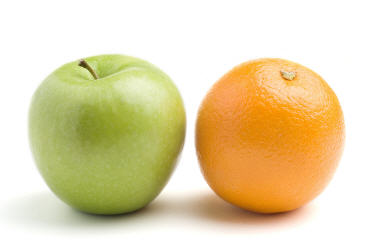I love teaching writing skills. I love sharing the work of my favourite writers and inspiring – or trying to at least – my pupils to mimic elements of their style. I love the finicky stuff, like ensuring paragraphs are cohesive. I love teaching how to create islands of words, using bracketing commas for example, to make sentences more complex and easier to read. I even love teaching spelling rules and how to write out the alphabet properly (yes those ‘f’s do need to slip below the line please). But I’ve never been a big fan of teaching the writing sections of GCSE English exams. Why? Well, there’s the tedious writing triplets (inform, explain, describe etc.), beautifully skewered by @Xris32 in a recent post. Then there’s the whole writing by numbers approach, which everyone, including me, must have been guilty of teaching:
- Start with a language feature. Usually a rhetorical question to ‘engage the reader’.
- Make sure you stick in a one word sentence.
- Oh and don’t forget a one word paragraph. Why sir? Oh…erm… examiners like it. Just do it.
- Cram in as many big words as possible. Sorry. Compress as much mammoth vocabulary in as is feasible.
- Use a semi colon and colon; even if you don’t know how to: use them. End paragraphs with ellipsis for no apparent reason.
- Check your spelling at the end. I know you never normally bother, Steven, but this is an exam after all.
- If in doubt, use AFOREST. Or DAFOREST. Or some other catchy mnemonic. Ensure you write this down on your answer sheet so the examiner knows that you are creating something formulaic and mechanical.
I could go on.
When I get bored I start to become more honest. My current Yr11 pupils, both A*/A and C/D borderline have started to cop more direct truths recently as my patience with this section of the exam is just one deeper than usual paper cut away from giving way…
On the current AQA English Language exam the writing section (Section B) is separated into a shorter task (Q5 – describe, explain, inform) and a longer one (Q6 – argue or persuade). These are worth half of the total marks, so it’s understandable why teachers feel the need to drill their pupils with the writing tricks.Here’s a typical Q5:
Write an article for your local newspaper in which you describe a memorable childhood experience. (16 Marks)
In the past I used to suggest that pupils might like to ‘think outside the box’ a little on this one. Now, in the spirit of telling it straight, I absolutely insist on it. Here’s what I do:
- Get them to write down what they think most of the tens of thousands of pupils taking the GCSE across the country will write about. They will happily tell me: A birthday party. Visiting Santa’s ‘grotto’. Going to the beach/theme park/Blackpool (poor northern comp kids)/The Andes for a spot of kayaking(posh independent school kids). I once marked 135 papers on the old AQA spec on a very similar question. Approximately 95% of them wrote about going on a day trip to the salubrious theme park Lightwater Valley (I used to go regularly with my family, so I’m not being snobby, just rude). They all had ice cream. They all got soaked on the log flume ride. They all nearly copped off with Kelly Smith in Yr 8 (she must have been popular). And they all fell asleep on the coach/backseat of the car on the way home before stopping off at the chippy to top off a glorious day. In fact they must have all gone at the same time. In the same E reg Vauxhall Astra. All 112 of them. By the 97th version of this I way ready to gouge out my eyeballs with a 5ml plastic medicine spoon.
- At this point I will tell them that it is, of course, possible to write about a bloody obvious topic and still get good marks. Less likely but possible. I may have awarded some decent marks to the Lightwater Valley posse. I simply don’t recall.
- Then I tell them that I do however recall giving full marks to one little gem of a candidate who wrote the same start to the story and then anticipated that I was going to find this a tad predictable, so then veered off David Mitchell style into a different genre. And then repeated this trick (convincingly I might add) in each paragraph: sci-fi, bildungsroman, romance pastiche, western etc. I’ll never forget that one, I tell them, and we’re going back a while.
- We then have a talk about how they could do something a bit different to subvert the question. Recently we looked at a spirit-crushing Q5: Describe a time when you couldn’t see things clearly. They banned writing about a) power cuts b) being stuck out in the dark c) waking up in the middle of the night confused. Instead they came up with 1. being blindfolded before a firing squad 2. being buried alive (they know I like the macabre stuff) and 3. A small event that changed their view of someone forever. Much more interesting, they agreed.
- Then we have a look at the mark scheme which confirms that this gives them more of a chance of higher marks, with phrases like ‘uses satire/irony/manipulates the reader’.
- Then I remind them that this is basically an opportunity to show off their writing and nobody, least of all their tired and resentful examiner, cares too figs whether any of this is actually true or not. Indeed, being ‘you’ i.e. a 15-year-old pupils writing about ‘yourself’ is usually the most stultifying thing you can do. Be an octogenarian looking back over their life. A single mother of three teenagers. An astronaut. A hitman. An apple growing on a tree waiting to be picked.
- At this point they normally say ‘So sir, this is like… CREATIVE writing?’
- And at that stage, we start writing.
What about Q6 (or any other writing to argue cobblers), I hear you ask. Pretty much the same, I answer. I’ll show you how next time.
Thanks for reading,
Mark





